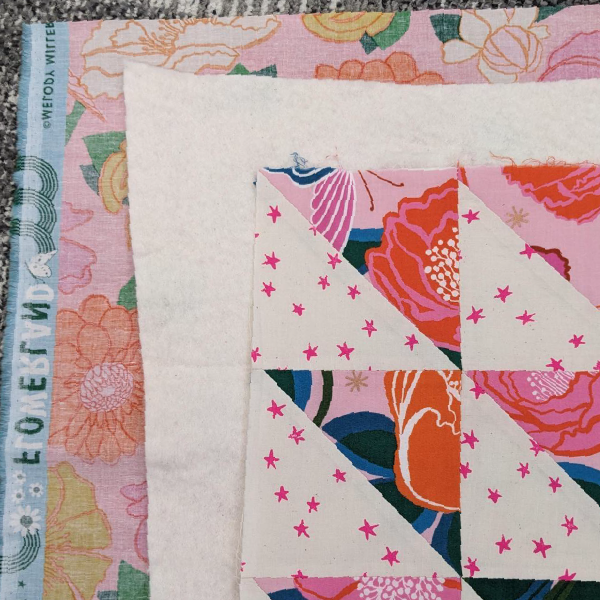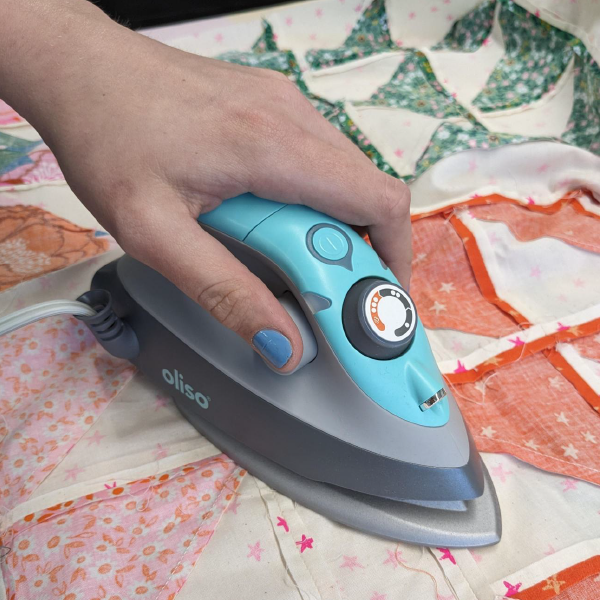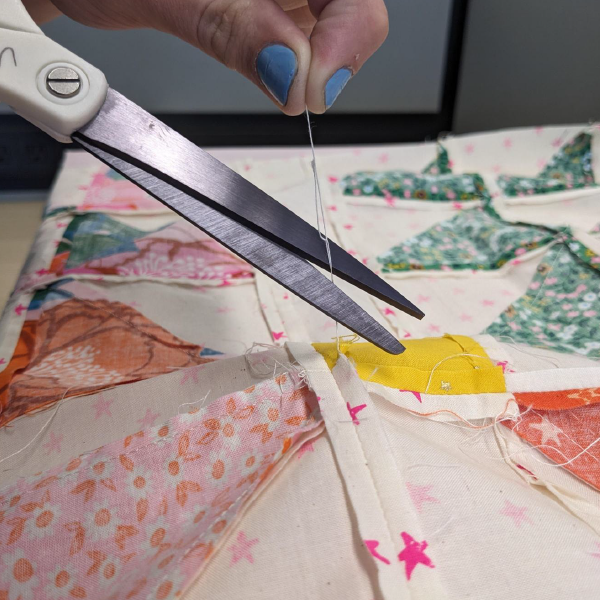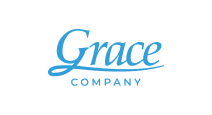How to Prepare Your Quilt for Longarm Quilting and Save on Longarm Services
Whether you’re just starting out as a longarm quilter, or you’re getting ready to send your quilt to a professional longarmer, these are the steps you should take to get the best possible results when finishing your quilt. Like most things, preparation goes a long way when it comes to longarm quilting. You can dive right in, but having a solid foundation will almost always lead to a better outcome! So, here are a few tasks you should check off your list before you get your quilt on the frame or in the mail.
Measure Your Quilt
The amount of batting and backing that your quilt will need depends on the size of your quilt top. Patterns list measurements, but accuracy is important here, so make sure that you break out the measuring tape and find out the exact dimensions of your top. Note that some longarm professionals have different size requirements for batting and backing, so make sure you check in with them before you cut and assemble your materials.
What size should my batting be?
Add at least six inches to the length and width of your quilt top, so that there are three inches of batting on each side of the quilt top when the two are layered.
What size should my backing be?
Add at least eight inches to the length and width of your quilt top, so that there are four extra inches of fabric on each side. No matter how carefully you align the three layers of your quilt, they will shift a little during the longarm process. If you don’t allow for extra space on all sides of your quilt, you’ll have to trim down your quilt top to accommodate for the shifting fabric.
 Press Your Quilt
Press Your Quilt
This step can be a little bit tedious but skipping it will lead to unwanted puckers and folds in your finished quilt. Pull out your iron and use it to make sure that every seam on your quilt top and backing is flat. The direction doesn’t matter, as long as the seams lay flat. You should also try to smooth out any wrinkles.
Clean Up Your Quilt
This step will probably take the longest. First, use your largest ruler to square up your quilt top and backing. After you’re happy with your edges, swap your rotary cutter for some scissors, and trim any threads from sewing or fraying fabric. With dark fabric, this is less of an issue, but if your quilt uses light fabric, you’ll likely be able to see any extra thread through the fabric. Finally, use a lint roller to remove any thread clippings, pet hair, lint, or any other debris, so you don’t accidentally quilt it into place.
Make Sure Everything Stays in Place
This is especially important if you are planning to send the quilt to a longarm professional. Ensure that everything stays put while the quilt is in transit and while it’s being quilted. That means checking that any appliques or embellishments are properly secured to ensure that appliqued fabric doesn’t get folded over and sewed onto your quilt that way. Then, stay-stitch around the edges of your quilt top with a 1/8” seam allowance to ensure that none of your piecing comes undone.
Mark Your Quilt
If someone else is finishing your quilt, make sure they know exactly what you want. Most professionals will have a request form to get all the nitty gritty details of your quilt vision, but it’s important to mark your quilt’s direction too. If the quilt is directional, mark the top on both the quilt top and backing.
Consider Finishing Your Quilts Yourself!
Doing your own longarm quilting may not be as out of reach as you think. If you just don’t enjoy finishing your own quilts, that’s okay, sending off your quilt to a professional is the right fit for you!
But getting your own longarm machine and quilting frame might actually be more affordable in the long run. If you make a quilt every month, it will take less than four years for the cost of hiring a longarm professional to overtake the price of your own quilting setup.
You can get a complete longarming setup from Grace Company (the Q’nique 16X Elite machine + Q-Zone Queen Frame) for as little as $5,399, and with financing options available, it’s even easier to get started.
Posted by The Grace Company
For over 25 years the Grace Company has been the leading manufacturer of high quality quilting frames and quilting accessories. What truly sets The Grace Company apart from other competitors is its level of quality, value, and experience toward all their endeavours. From products to external and internal customer experience, the Grace Company responds to market and customer needs and continues to lead the quilting industry. Grace Company frames and hoops are designed to be easy to build and compatible with most major quilting machines. They'll have the quilting product you need.



